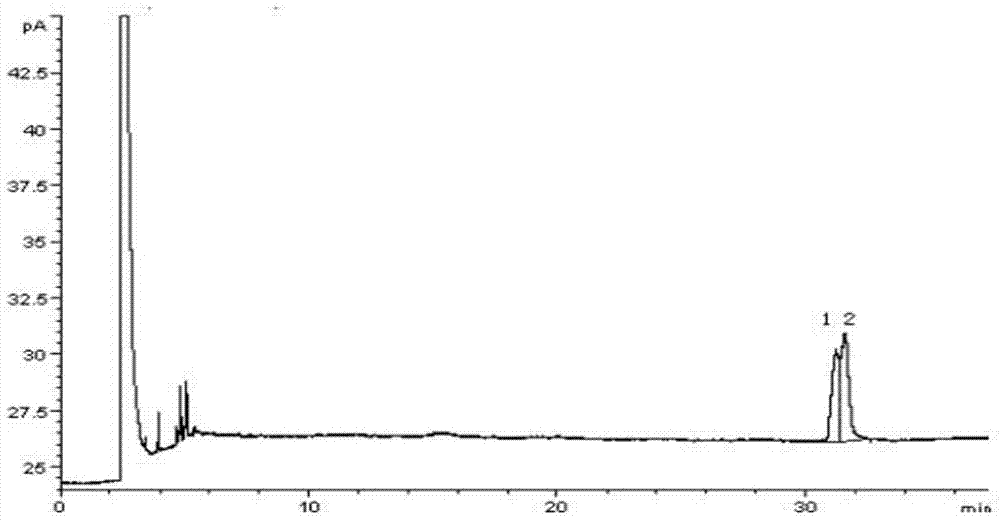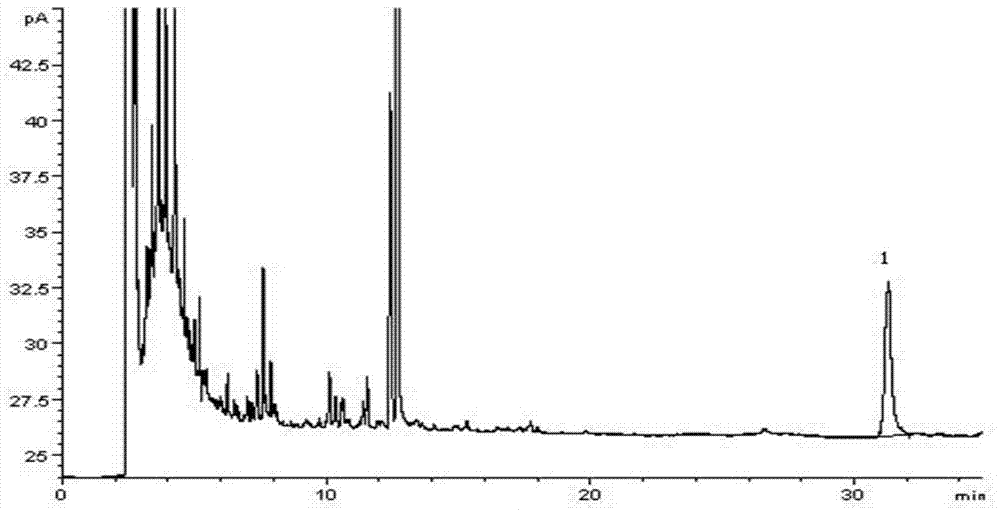Method for detecting d-alpha-tocopherol and 1-alpha-tocopherol in food through gas chromatography
A gas chromatography and tocopherol technology, which is applied in the detection field, can solve the problems of l-α-tocopherol determination, difficult separation of different types, measurement interference, etc., and achieves the effects of good anti-specificity, easy operation and improved extraction rate.
- Summary
- Abstract
- Description
- Claims
- Application Information
AI Technical Summary
Problems solved by technology
Method used
Image
Examples
Embodiment Construction
[0024] The train of thought of the present invention is: adopt suitable sample pretreatment technology and capillary chromatographic separation column, weigh a certain amount of food in the saponification bottle, add ascorbic acid solution, potassium hydroxide solution and absolute ethanol in boiling water bath saponification backflow, then put Transfer the saponified solution into a separatory funnel, wash with water and petroleum ether, pass through an anhydrous sodium sulfate column, concentrate in a water bath and rotate until nearly dry, add methanol to dissolve, mix, and constant volume, then centrifuge and separate in a centrifuge, and take the supernatant for input Gas chromatography with a hydrogen flame detector. in:
[0025] (1) The first point of the method is that the sample is heated and saponified with potassium hydroxide-ethanol solution, and extracted with petroleum ether, which avoids the interference of the sample matrix on the chromatographic peak, removes ...
PUM
| Property | Measurement | Unit |
|---|---|---|
| recovery rate | aaaaa | aaaaa |
Abstract
Description
Claims
Application Information
 Login to View More
Login to View More - R&D
- Intellectual Property
- Life Sciences
- Materials
- Tech Scout
- Unparalleled Data Quality
- Higher Quality Content
- 60% Fewer Hallucinations
Browse by: Latest US Patents, China's latest patents, Technical Efficacy Thesaurus, Application Domain, Technology Topic, Popular Technical Reports.
© 2025 PatSnap. All rights reserved.Legal|Privacy policy|Modern Slavery Act Transparency Statement|Sitemap|About US| Contact US: help@patsnap.com



